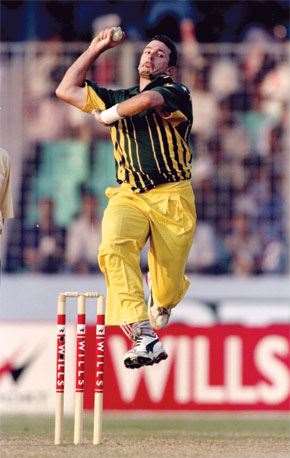White takes us through a typical T20 training day, whatever that might be ...
 Photos by Joseph Feil
Photos by Joseph FeilFAST WORK
“The basic fundamentals of each form of the game are very similar, obviously, but Twenty20 demands that more specific skills be practised and worked on at training a bit more. Just like you’d practise your forward defence for Sheffield Shield or Test cricket, basically you have to practise hitting sixes to improve as a T20 batsman. There are specific skills with both bat and ball which have to be built and maintained into order to get the most out of yourself as a T20 player.
“I’m not just referring to areas like shot selection, but the actual T20-specific type of shot which you might work on. Obviously some of the ‘trick’ shots which are around in the shorter format these days ‒ the paddle sweep, your reverse sweeps, over-the-keeper ramp-type shots ‒ are things you don’t see in even one-day cricket, really.”
20 TIMES THE FUN
“My enthusiasm for Twenty20 mirrors that of the many young people ‒ and their mums and dads ‒ who are coming to watch the game in greater numbers. Some big features are that it doesn’t go for as long, it’s more entertaining; it’s jam-packed full of action over three hours. It appeals to the players as much as it does to the people who come and watch it. From a batsman’s viewpoint, it’s a great game when everything is going for you. Then, if the momentum is going the other way, it’s quite hard to wrestle it back sometimes.”
SPECIFIC SKILLS
“All players complete net sessions throughout the season, but when it comes to T20, the focus becomes more specific and concentrates on the core skills needed for the shortened form. As a batter, you’ll train in the nets as you probably would for any game; but you’re looking to ramp up your intensity straight away, to hit the ball harder and score quickly ‒ more big hitting, more high-risk shots ... Very specific stuff that’s individual to each batter, building on whichever strengths they have.
“It’s no different from a bowler’s point of view. You’ll start off with your basic stuff. Then, obviously, you go into each T20 match with a range of deliveries; from slower balls, yorkers – both wide and straight. Then there’s slower-ball bouncers. There’s a variety of balls which you’d probably go to as a bowler – compared to ‘line and length’ and the odd bouncer like in Tests.”
Related Articles

Luck of the Draw

Harman hails lookalike Ponting as 'handsome fella'













